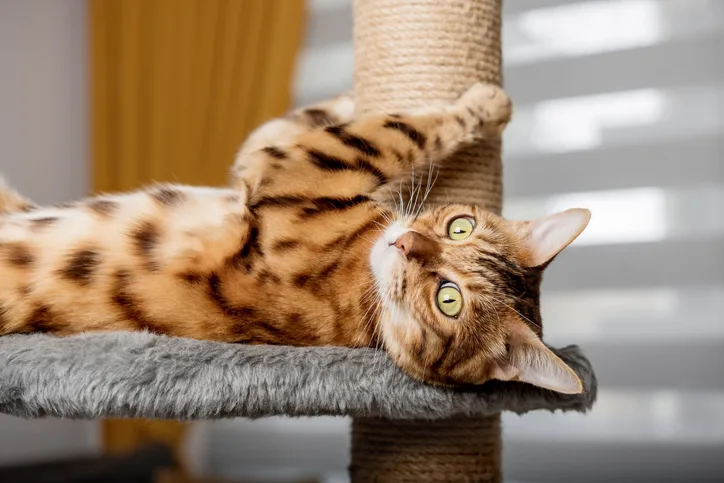
In the Literature
van Leeuwen E, ter Mors E. Addressing barriers to action: increasing cat guardians’ compliance with professional environmental enrichment advice. Anthrozoös. 2023. doi:10.1080/08927936.2023.2254553
The Research …
Stress secondary to inadequate environmental enrichment is a common cause of behavioral problems in cats; however, pet owners may be resistant to implementing changes that affect their own lifestyle.1 Cat owners typically seek veterinary care less frequently and are less inclined to follow clinician recommendations than dog owners.2
The goal of this study was to investigate how addressing barriers to action can increase the compliance of cat owners given professional advice for behavioral problems. Cat owners (n = 221) in the Netherlands were given a hypothetical scenario that consisted of seeking help from a professional cat behavior advisor and being counseled to implement environmental enrichment (eg, increasing the number of litter boxes in the home, providing separate feeding stations for each cat). Participants then read responses attributed to other owners who had received similar advice. Approximately half of the participants (n = 113) read that other owners held positive beliefs about the enrichment and would adapt their home, and the remaining participants (n = 108) read that other owners were skeptical about the enrichment and would make little effort to adapt their home.
The authors used the theory of planned behavior to help distinguish between motivational- and capacity-related perceived behavioral control (PBC) over implementation of recommendations. Motivational barriers refer to the belief that changes cannot be made due to requiring too many personal concessions. Capacity barriers are physical restrictions or lack of resources and/or control to make changes.
Exposure to positive responses from other owners resulted in a more positive subjective norm with respect to enrichment that subsequently increased motivational PBC and compliance with recommendations. Capacity PBC also predicted compliance but was not influenced by others’ perceptions of enrichment.
… The Takeaways
Key pearls to put into practice:
Environmental enrichment for cats is important to improve welfare, reduce the likelihood of behavioral problems, and improve the human–animal bond, which is key for owner compliance.
Effective communication and a good clinician–owner relationship can help improve compliance. Establishing trust with the owner can help determine whether compliance is affected by motivational (I don’t want to) or capacity (I don’t have the ability to) barriers. Practical guidance may help owners not motivated to implement recommendations. For example, instead of simultaneously providing multiple recommendations, one simple environmental enrichment (eg, provide more toys) recommendation can be made, followed by additional, gradual steps.
Perception and implementation of environmental enrichment by other cat owners affected the willingness of study participants to implement enrichment. Recommendations should therefore be presented in a way that can be perceived as positive. For example, personal experience with enrichment or examples of effective implementation can be shared.
You are reading 2-Minute Takeaways, a research summary resource presented by Clinician’s Brief. Clinician’s Brief does not conduct primary research.